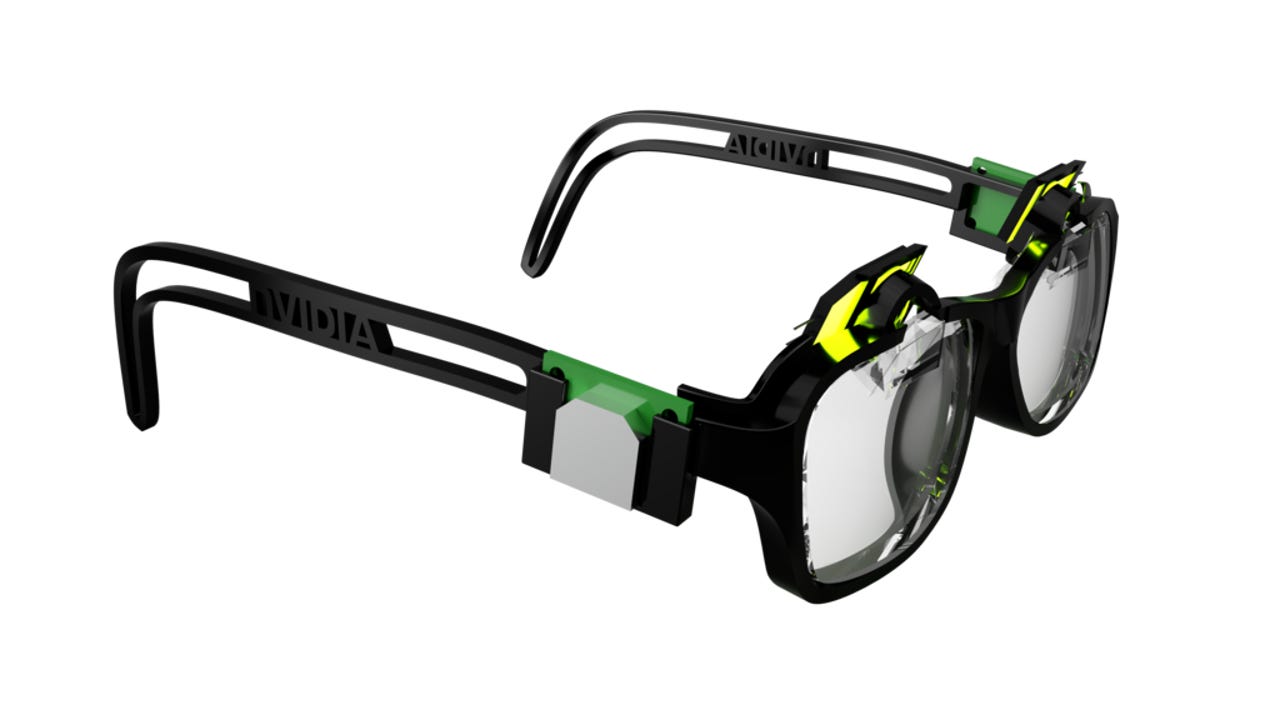Nvidia Research demos "Prescription AR" glasses


After years of buzz, augmented reality is finally emerging as a useful technology with a variety of consumer and enterprise applications. This week, Nvidia is showcasing its latest research that could make AR wearables even more practical.
At the SIGGRAPH conference on computer graphics this week in Los Angeles, Nvidia will demo a pair of "Prescription AR" glasses. As the name suggests, the AR glasses can have a user's prescription built right in, creating a more convenient and comfortable experience.
Compared to current-generation AR devices, the display is many times thinner and lighter, and it has a wider field of view, according to Nvidia. Meanwhile, virtual objects appear throughout the environment rather than clustered in the center.
Next, Nvidia will demo its "Foveated AR" headset, which combines gaze tracking with image rendering for more efficient compute and power usage. The device adjusts the resolution of images it displays and their focal depth based on where the user is looking.
"If you have a certain amount of graphics horsepower that's going to be applied to an image, you want to put it where you actually see it," Greg Estes, Nvidia's VP of corporate marketing and developer programs, said to reporters.
More from Nvidia:
- Nvidia announces 10 new RTX Studio laptops and mobile workstations
- Google, Nvidia tout advances in AI training with MLPerf benchmark results
- Nvidia expands colocation program around the globe
The adjustments are made in real time using deep learning. The glasses leverage two different displays per eye. The first is a high-resolution, small field of view that displays images to the portion of the human retina with the highest visual acuity. The other display provides low-resolution images for peripheral vision.
Nvidia this week is also showcasing its most popular research demo -- the AI painting web app called GauGAN. With the app, which leverages Nvidia's research into generative adversarial networks, users can draw out a rough sketch of a landscape and see it transformed into a photorealistic scene.
A beta version of GauGAN has been publicly available via the Nvidia AI Playground for the past month, and in that time, users have created more than 500,000 images with it. While it's still just a free tool in beta that demonstrates Nvidia's latest research, the company boasts that creatives from top film studios and video game companies are among its fans.